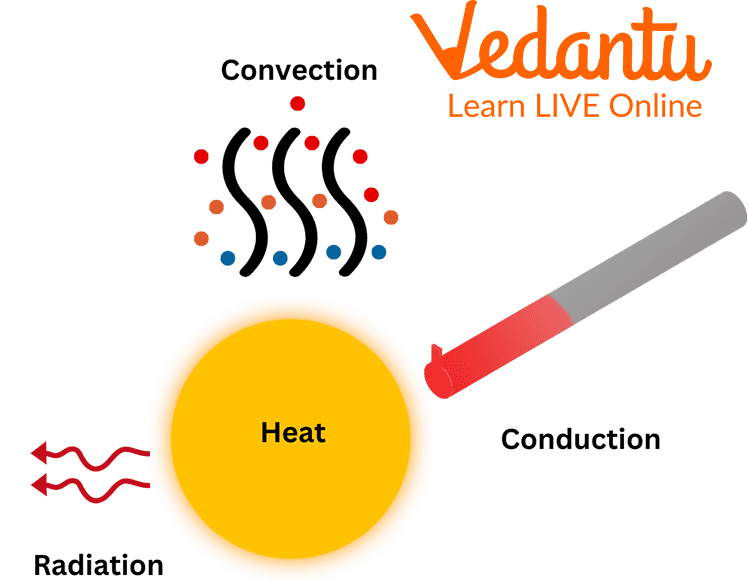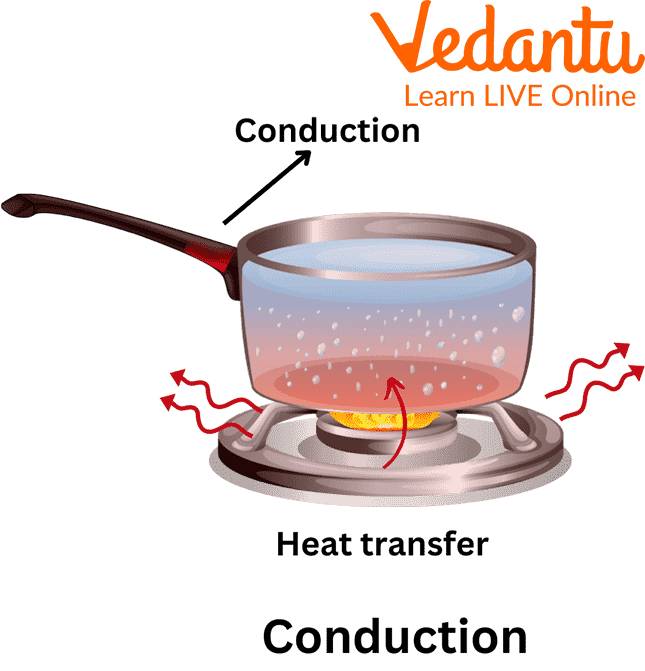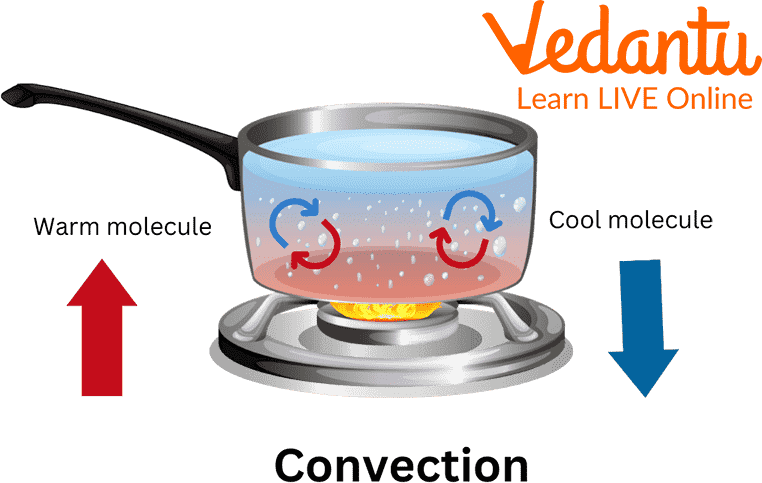




Overview about Heat Transfer
Kids, have you ever touched a hot object? Have you wondered how things heat up? Come, let us learn about heat transfer today. The transfer of heat energy or thermal energy from one object to another is called heat transfer. Heat is transferred from the objects at certain temperatures, from high to cold. An interesting fact about heat is that it does not depend on any material medium to transfer. In this article, we will read about the different methods of heat transfer in detail. At the end, we will finally be able to answer the different questions about heat transfer. Let’s dive right in and learn more about heat transfer.

Heat Transfer
Methods of Heat Transfer:
Heat transfers through our surroundings all of the time. Children, have you ever been to a beach on a sunny day? There you must have noticed walking on the sand feels hot, and diving into the ocean feels cold. Eating ice cream on the way back from school on a sunny day goes from chilled to cool to warm and then melts all over your ice cream stick, flowing on your hand at a rapid rate. Heat transfers happen to us every time throughout the day.
There are primarily three methods of heat transfer in nature.
Conduction heat transfer
Convection heat transfer
Radiation heat transfer

Methods of Heat Transfer
Conduction Heat Transfer
Conduction is the transfer of heat between the objects directly contacting each other. The better the conductor, the more rapidly heat energy will transfer. There are a variety of good conductors. A few of them are copper, iron, silver, steel, etc. Also, there are some terrible conductors, also known as insulators. The insulator includes wood, paper, air, etc. That is why it is not recommended to pick up a pile of iron rods sitting in the sun unless you want to burn your hand, but there is no restriction in picking up a bundle of paper kept in the sun.

Conduction Heat Transfer
Convection Heat Transfer:
The up and down movement of gases and liquids caused by thermal or heat energy transfer is called convection. As a gas or liquid is heated, it warms, expands and rises because it is less dense. When the gas or liquid cools, it becomes thicker and falls. Warming and rising and cooling and falling create a convection current. This is the primary way heat moves through gases and liquids. Some examples include the warmer water on a pool surface and floating in a hot air balloon. Heat flow in convection occurs in a relative path from hot fluid to cold fluid regions. This heat flow is caused by molecular motion.

Radiation Heat Transfer:
Let's now talk about radiation. Radiation is defined as the electromagnetic waves travelling through space. When these electromagnetic waves come in contact with an object, the waves transfer the heat energy to that object. It is heat travelling in the form of visible or non-visible light. Have you ever noticed standing near a campfire on a cold night feels very good and warm? The heat travelling through that campfire to warm up your body is through radiation. Some other examples of radiation are reheating cold food in a microwave and turning on the lights of the room.

Radiation Heat Transfer
Facts About Heat Transfer:
Let us know some amazing facts about heat transfer:
Understanding how heat transfers make it easier to find efficient ways to warm and cool our houses, keep people safe from overheating and create new and innovative technologies to improve our living.
Good conductors of heat are great conductors of electricity too. Hence, copper is also used to make wires for our houses and stores in which the electric current flows, thus generating electricity.
The faster the molecules of an object move, they generate heat, which increases that object's overall temperature.
The transfer of heat happens until the objects between whom the heat transfer is happening come into an equilibrium state.
In some cases, heating an object can expand the area of that object, while cooling an object can shrink the object.
Summary
In the above article, we read about heat transfer and methods of heat transfer. Conduction, convection and radiation are three critical ways through which heat transfer in our environment. They are the heat transfer principles we experience every day. Heat is an energy which moves from hotter objects to cooler objects. The coldness or hotness of any object is measured by the rise and loss in its temperature. Objects are constituted of minute particles, and the movement of these particles generates heat and makes the object hot. Transfer of heat may or may not be dependent on the medium. Conduction and convection require a medium for heat to flow, while the transfer of heat from radiation is a medium-less process. We hope you enjoyed reading this article, in case of any other doubts feel free to ask in the comments.
FAQs on All About of Heat Transfer
1. Can heat transfer from a cold object to a hot object?
Yes, heat can transfer from a colder object to a hotter object. It happens opposite to what occurs in nature. This is also called forced heat transfer and happens in refrigerators and air conditioners to cool down things.
2. Which type of heat transfer is responsible for the heating up of the earth?
Radiation is responsible for the heating up of the earth. The earth absorbs the heat energy coming out of the sun in the form of radiation. This increases the temperature of the earth, thus heating it up.
3. Can heat energy change the state of matter?
Yes, heat or thermal energy can change the state of matter. Food items like chocolate, ice cream, and butter change their state from solid to liquid when heated.
4. What can stop heat from being transferred?
An insulating device can stop heat energy from being transferred. For example, a thermos flask is an insulating object that prevents heat from entering or escaping inside or outside. It keeps the cold water cooler and hot tea warm inside it by insulation.









